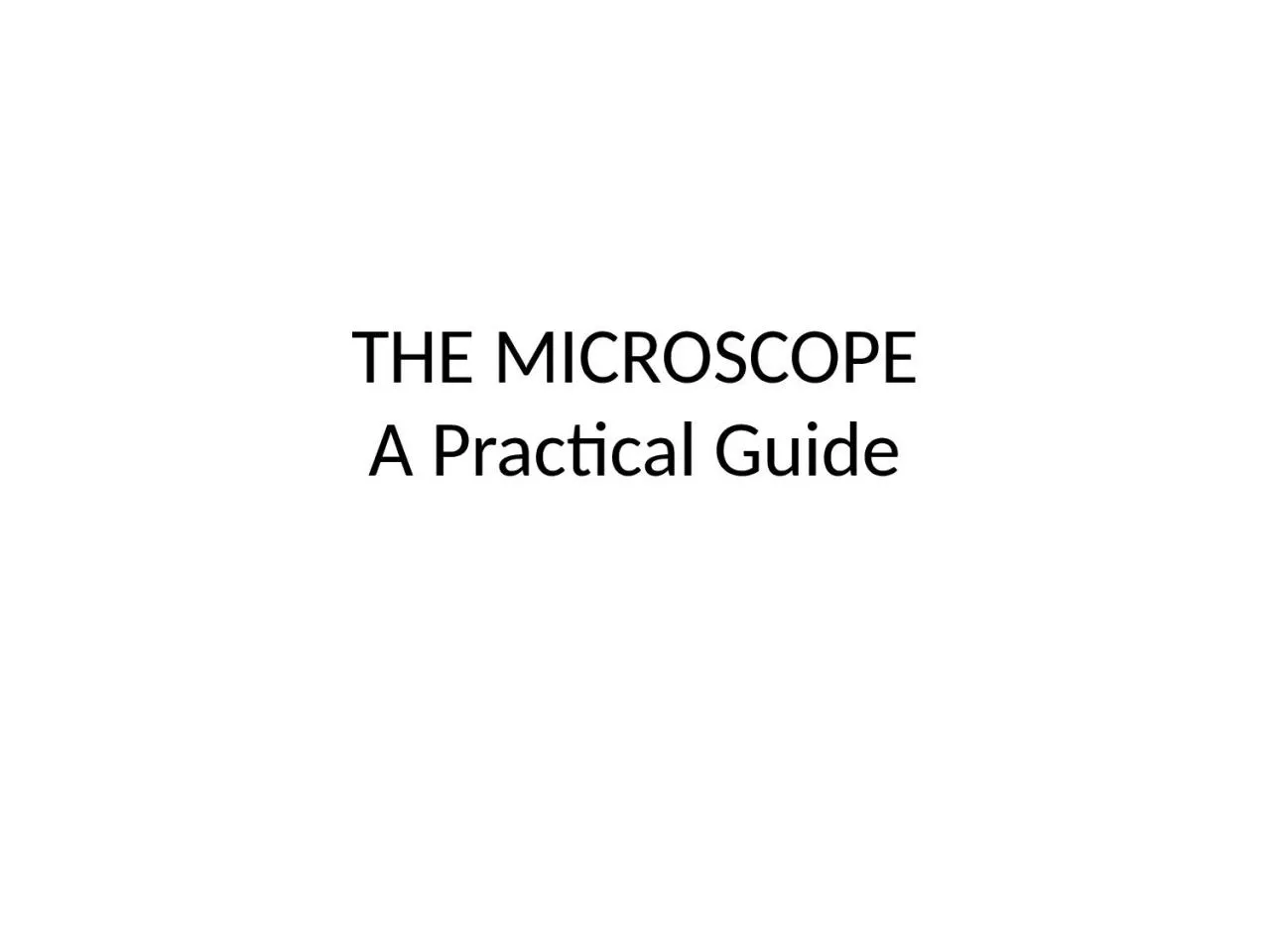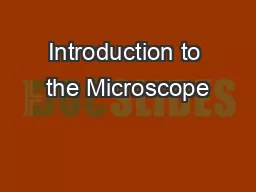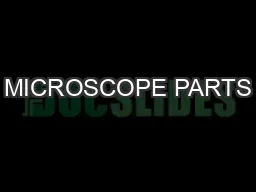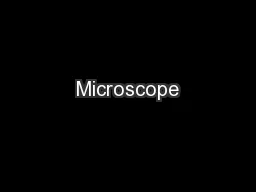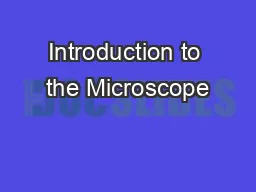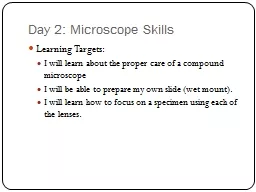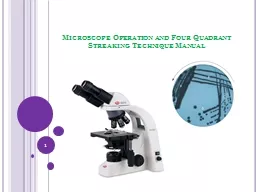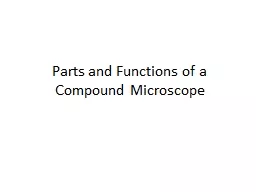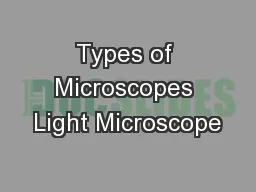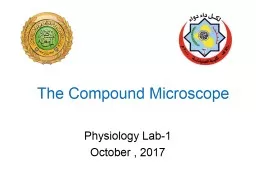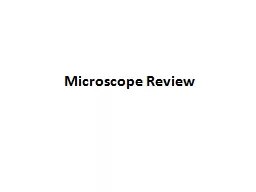PPT-THE MICROSCOPE A Practical Guide
Author : madison | Published Date : 2024-03-13
Microscopes used in clinical practice are light microscopes They are called light microscopes because they use a beam of light to view specimens A compound light
Presentation Embed Code
Download Presentation
Download Presentation The PPT/PDF document "THE MICROSCOPE A Practical Guide" is the property of its rightful owner. Permission is granted to download and print the materials on this website for personal, non-commercial use only, and to display it on your personal computer provided you do not modify the materials and that you retain all copyright notices contained in the materials. By downloading content from our website, you accept the terms of this agreement.
THE MICROSCOPE A Practical Guide: Transcript
Download Rules Of Document
"THE MICROSCOPE A Practical Guide"The content belongs to its owner. You may download and print it for personal use, without modification, and keep all copyright notices. By downloading, you agree to these terms.
Related Documents

